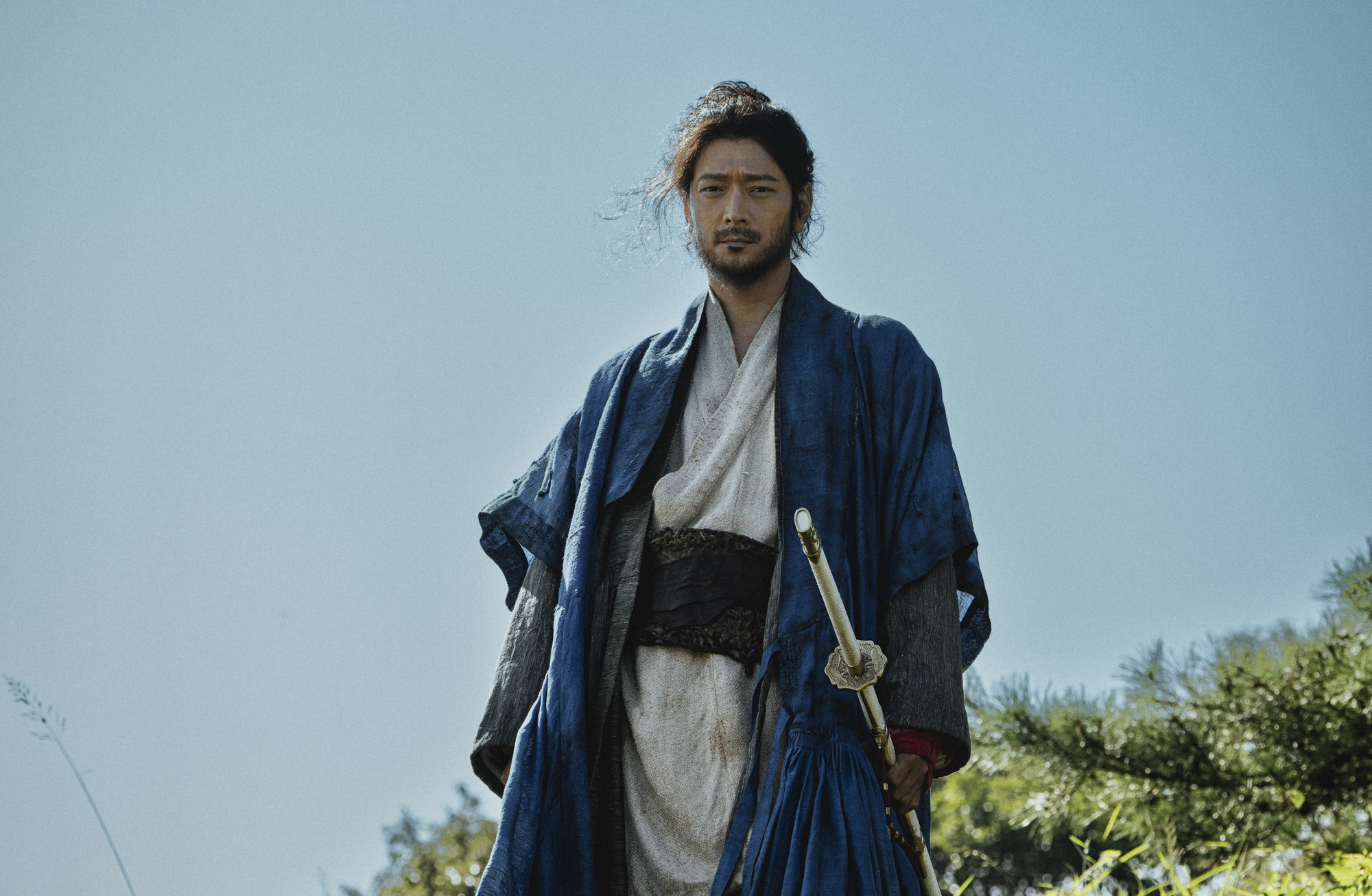“It’s been a great experience as I’ve been receiving messages from my foreign friends because the film was released globally at the same time,” Gang said to reporters at a group interview in Jongno District, central Seoul, on Wednesday.
“My foreign friends usually reach out months after my films are released in Korea, telling me they enjoyed them after seeing them on streaming platforms, since the films often don’t premiere in their countries.”
Released on Oct. 11, the historical film also landed at No. 3 in Netflix’s Global Top 10 films list in the non-English category for two consecutive weeks, proving its global popularity.
![Actor Gang Dong-won [AA GROUP]](https://koreajoongangdaily.joins.com/data/photo/2024/10/25/2e4e1070-5e01-468c-b798-7bba2957abff.jpg)
Directed by Kim Sang-man and produced by Park Chan-wook, the film revolves around two childhood friends — Jong-ryeo, the son of a renowned Joseon warrior, and Cheon-yeong, a slave. Their differing social standings lead them to become adversaries during the Joseon Dynasty (1392-1910). The star-studded cast includes Gang Dong-won, Park Jeong-min, Cha Seung-won, Jung Sung-il, Kim Shin-rock and Jin Sun-kyu.
Gang, who portrays Cheon-yeong, director Kim and Park Jeong-min, who plays Jong-ryeo, all spoke with reporters separately about the film and its behind-the-scenes stories. For Gang, the challenges of an R-rated historical drama made him wonder how global audiences would respond.
“I was a bit curious about how well it would be received since it’s a historical drama with an R-rating,” Gang said. “But I’m really happy to see the response, with more people watching than I expected and so many positive reactions from overseas.”
![Still from Netflix's historical film ″Uprising″ [NETFLIX]](https://koreajoongangdaily.joins.com/data/photo/2024/10/25/185c6c70-d544-432c-b07f-39f473da57b2.jpg)
New platform, different technique
Though Gang has a long filmography, this was his first project specifically for a streaming platform. He said he felt the difference compared to preparing a film for theaters, especially in shooting techniques.
“About two weeks into filming, I started to wonder why the camera was so close,” the actor said. “When I asked the director about it, he replied, ‘It’s for Netflix.’”
That’s when Gang realized that to ensure emotional expressions were clearly visible on screens of any size, lots of close-ups were needed. “It wasn’t easy,” Gang said, “but I worked hard to ensure a satisfying result.”
Many of his co-stars, including Kim Shin-rock, praised Gang’s swordsmanship in the film, referring to it as “Korea’s film industry’s treasure.”
![Still from Netflix's historical film ″Uprising″ [NETFLIX]](https://koreajoongangdaily.joins.com/data/photo/2024/10/25/334bddcc-69bf-4735-9c8d-105b5e21eccd.jpg)
Gang noticed a significant difference in his physical strength compared to when he starred in the “2014 historical film Kundo: Age of the Rampant,” which allowed him to focus more on his movements this time.
“Thinking back to when I filmed ‘Kundo,’ I remember that when I swung the wooden sword, my arms didn’t have enough strength to freeze my motion,” Gang said. “So, I started training by swinging it a thousand times every day.”
He added, “But this time, when I first picked up the wooden sword and swung it, I was able to stop it immediately. So, instead of focusing just on the basics, I concentrated more on the form and movements in this film.”
![Still from Netflix's historical film ″Uprising″ [NETFLIX]](https://koreajoongangdaily.joins.com/data/photo/2024/10/25/00763985-5fc8-4c12-879c-76682e28b0be.jpg)
Bromance chemistry
The chemistry between Gang and Park raised questions about their seemingly romantic relationship, which Gang also questioned while shooting the scenes.
“Park always prepared like that, so I was really curious about how far he was planning to go with [his emotions],” Gang said, praising Park’s passion and revealing a behind-the-scenes episode where the staff remarked that Park’s eyes seemed “melodramatic” when monitoring their shoot.
For actor Park, he recognized such responses, which he didn’t expect to be seen as romance.
“I believe it’s fortunate for an actor to hear multiple stories from a single work,” Park said to reporters at a cafe in Jongno District last week.
“I think the feelings and friendship he had for Cheon-yeong were undoubtedly genuine,” he said. “However, amid all this, when certain events occur, or he hears information, it becomes clear that he still carries the class consciousness of an aristocrat.”
He also revealed that one of the most unexpected aspects of the film was its mise-en-scène.
![Still from Netflix's historical film ″Uprising″ [NETFLIX]](https://koreajoongangdaily.joins.com/data/photo/2024/10/25/662a58a8-3b80-4095-bc7f-437b123c74cf.jpg)
“The composition of each scene, the movement of the camera, and the colors used in the film aren’t typically detailed in the script,” he said. “[So when seeing the film] there were many aspects beyond my range of imagination.”
Visual artist, director Kim Sang-man
“I can honestly say that the chemistry with the actors was excellent,” Kim said during an interview with a reporter at the same cafe last week. “When I brought one element to the scene, the talented actors I worked with would show two times more of it, really expressing their characters so well, which made the filming process a truly enjoyable experience.”
The director revealed that the film changed his mindset about historical projects, saying, “Honestly, I was never interested in historical films set in the Joseon Dynasty.”
“There are so many historical records, and issues related to accuracy inevitably come up. I also felt like there would be less room for creativity due to the numerous evidences. So, I thought it might be more fun to work on something set during the Gojoseon (2,333 B.C. to 108 B.C.) or Buyeo (2 B.C. to 494 A.D.) periods. However, this project has been an awesome experience, and I think I might take on another historical work in the future.”
BY KIM JI-YE [kim.jiye@joongang.co.kr]





